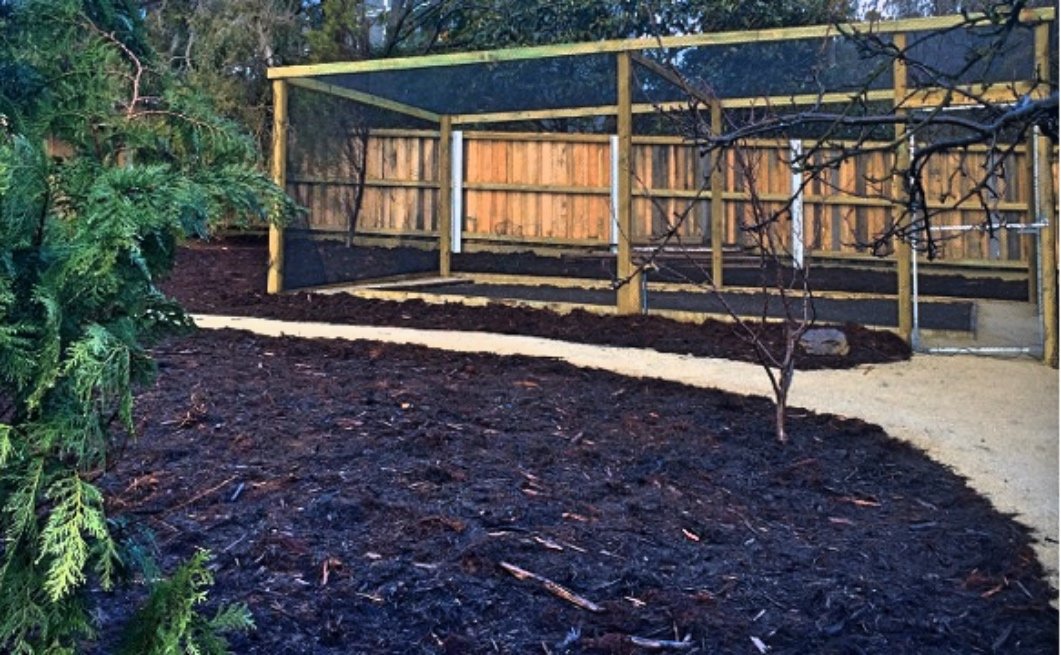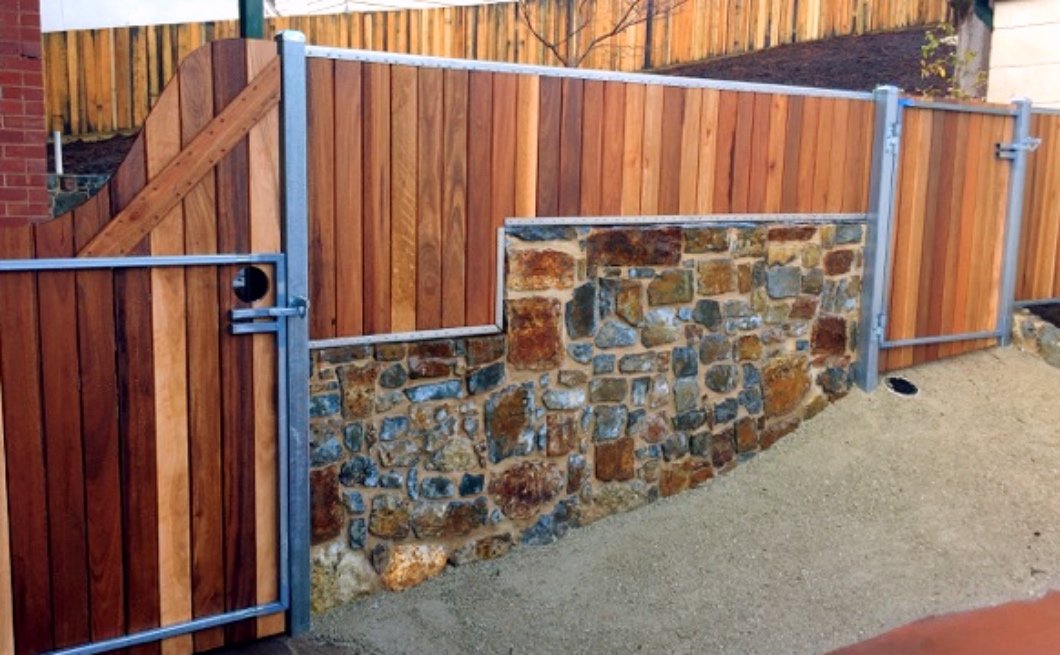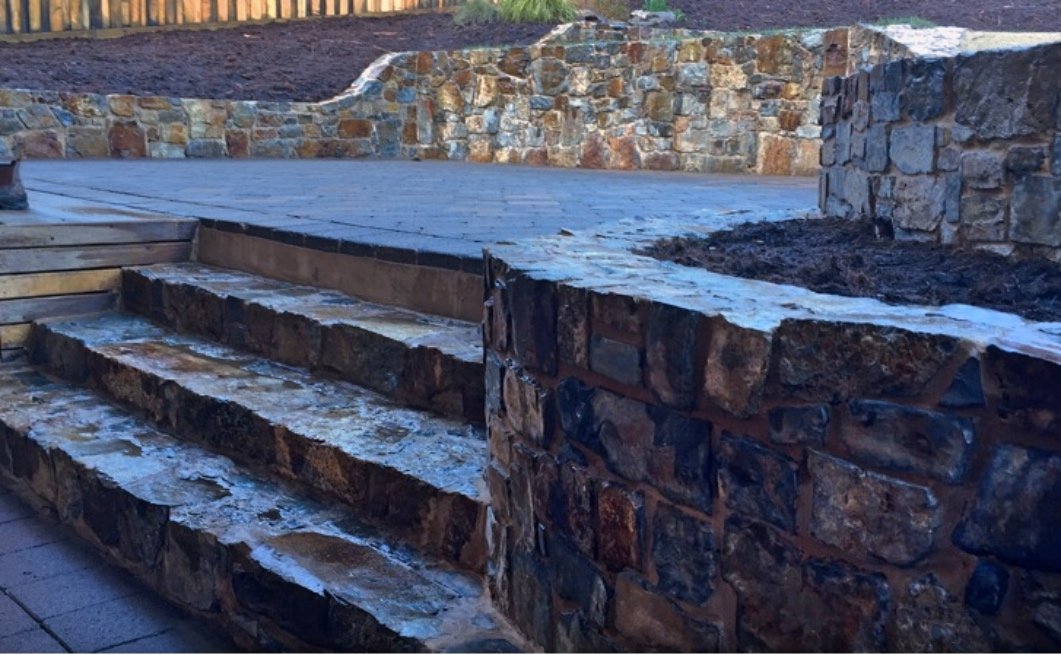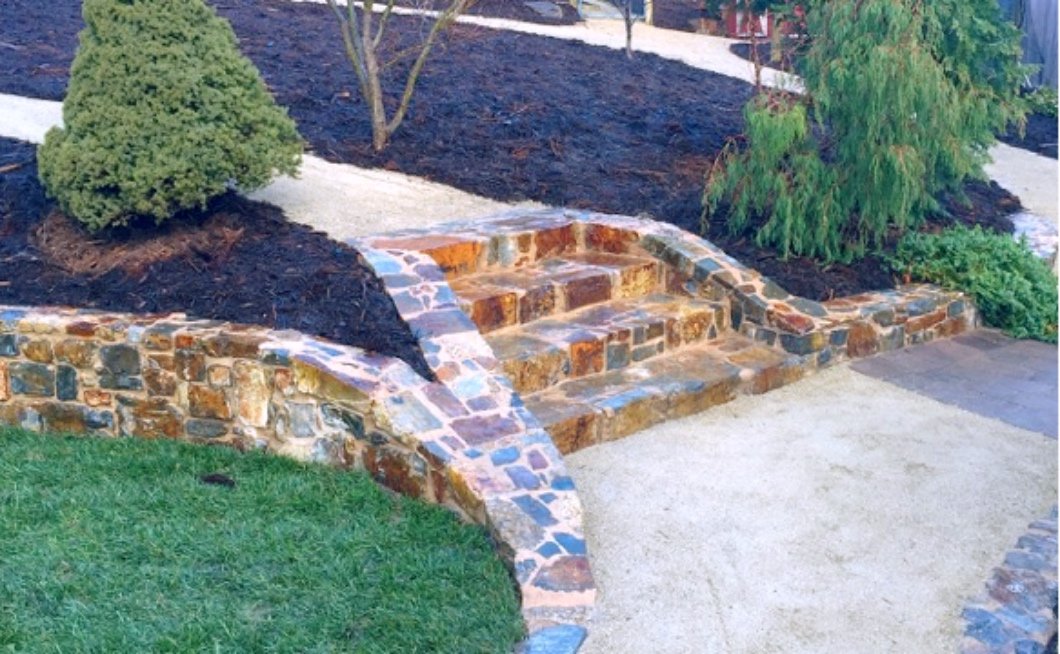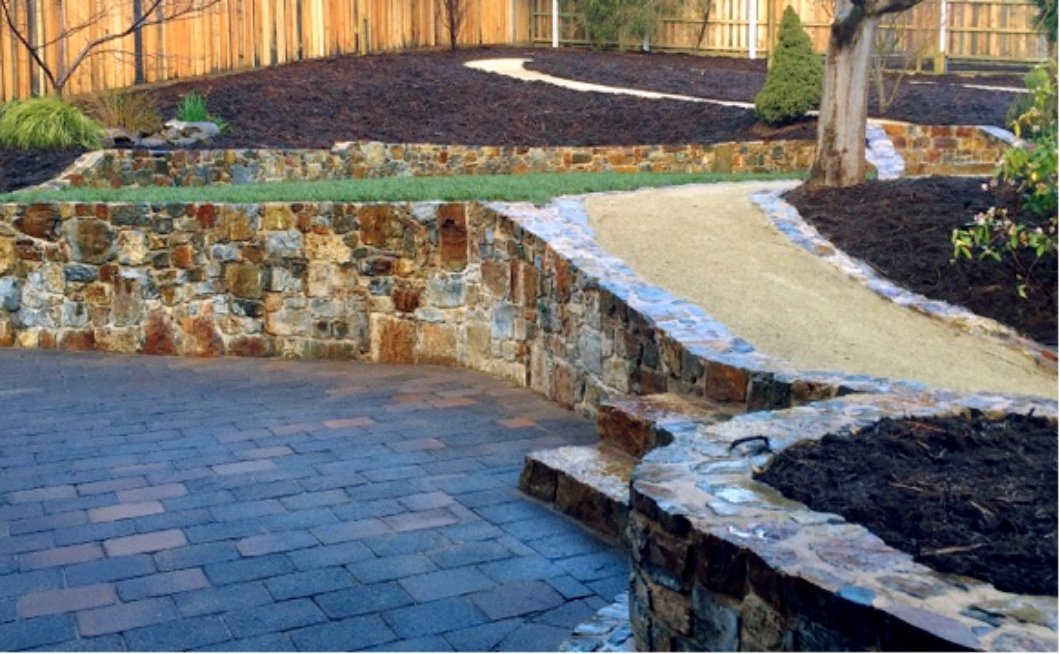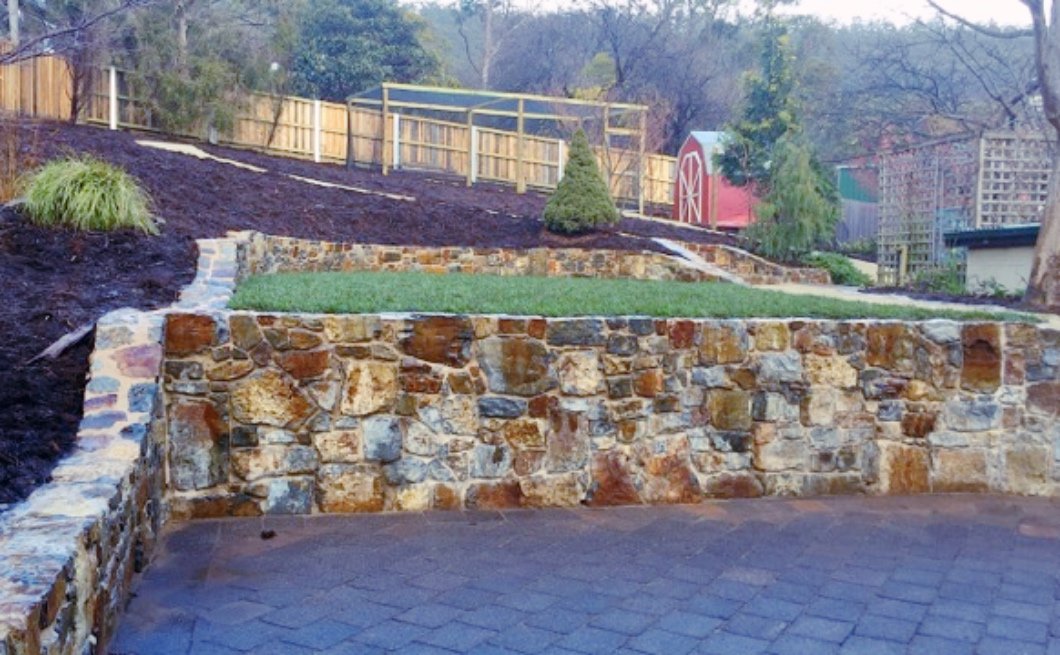Set in stone
Local permian mudstone is a beautiful material to build with, formed around 240 million years ago with thin layers of white limestone full of marine fossils overlaying dense, blue iron rich sediments that rust to warm russet tones. Unlike sandstone, which can be split with hammer and bolster, or shaped with grinding tools, mudstone is stubbornly unresponsive to most hand tools. Which means that each stone needs to be hand-selected from the quarry, chosen for its natural shape - a flat face and a square top, or a long needle, a thin capping stone, a triangular piece to fit a particular hole - and most of all its character. Then begins the long slow process of lovingly working the magic that makes a pile of stone and rubble stand up and stay up. Zen and the occasional expletive.
Mudstone forms the backbone of this West Hobart garden, holding the soil where it needs to be, and allowing feet or wheelbarrows to ascend and descend as fluidly as possible over the length of this sloping back garden. An organic certified mulch mat clothes the soil beneath the mulch. This allows water and air exchanges between the soil and sky, while preventing most weed seeds in the soil from finding their way up to light, and making it harder for blow-in weed seeds to penetrate deeply into the soil, ensuring ease of garden maintenance. While there are few plants to be seen in these pictures, a handful of indigenous Tasmanian plants have since been planted, some fruit trees, and the netted veggie patch has been vigorously nutritious!
